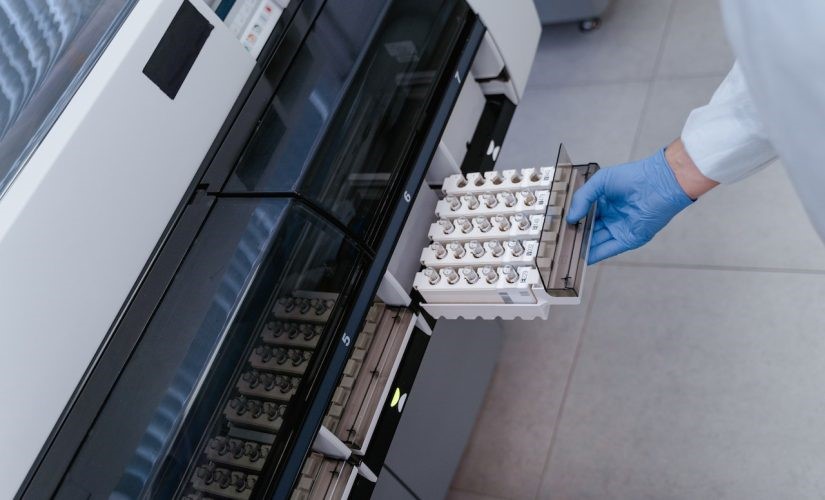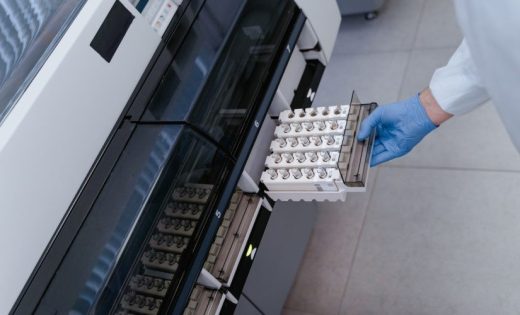AI Brings New Capabilities and Risks to Healthcare Data Security
AI Brings New Capabilities and Risks to Healthcare Data Security

Data protection is a critical aspect of properly managing a healthcare organization’s IT environment. Healthcare data remains one of the top targets for cybercriminals due to the sensitivity level of their system data. The targeted datasets are personally identifiable information (PII), financial information, and health information.
These organizations can strengthen their systems by introducing periodic updates and applications as part of their DevSecOps strategy. Speed, reliability, and security are all critical aspects of a successful DevSecOps approach. The tools and processes used to pursue this goal dictate your level of success.
That said, despite constantly releasing new tools, recent advancements in artificial intelligence (AI) are receiving massive attention. For example, generative AI and large language models (LLM) are helping workers in various industries expedite processes and offload manual tasks, continually improving their programs.
Developers are discovering AI tools can quickly produce lines of code with a few simple prompts. This technology is still very young, so it’s unclear how successful these efforts will be, but that isn’t stopping many development teams from diving right into using AI tools.
Healthcare companies need to retain strict control over their IT infrastructure. So, how do AI tools factor into their requirements?
Generative AI and LLM tools can significantly increase time to market, but what are the risks? Are the necessary levels of control possible for healthcare DevSecOps teams?
Let’s explore where this technology is currently, what it means for InfoSec teams, and how to utilize these powerful new tools safely.
How Generative AI and LLM Work
Both generative AI and LLM tools work with prompts. A user can ask questions or request a function, and the tool generates a response. These responses are tweaked with further questions or prompts to suit the user best.
However, there’s a difference between generative AI and LLM. Generative AI describes any type of artificial intelligence that uses learned behavior to produce unique content. It generates pictures and text and encompasses large language models and other types of AI.
On the other hand, LLMs are highly refined versions of generative AI. They are trained on large amounts of data, produce human-like responses, and are more applicable to DevOps practices. Users can input commands asking the program to create a flow or a trigger, for example, then the LLM can produce code applicable to the user’s request to the program.
Choosing the Right Model
There are a variety of AI models to choose from. Open-sourced models based on previous versions are trained with new source material daily. Larger, more popular models like Google Bard and Open AI’s Chat GPT are the most well-known versions of large language models in use.
These tools are trained on websites, articles, and books. The information contained within this source text informs responses to user queries and dictates how the program formulates its responses.
The architecture of generative AI tools is built with multiple layers of mechanisms to help them understand the relationships and dependencies between words and statements, allowing them to be more conversational.
The data fed into an AI model informs the responses. These systems are refined over time by learning from interactions with users as well as new source material. Further training and refinement will make these tools more accurate and reliable.
Learning from user-input data is a great way to expedite the learning process for generative AI and LLM tools. However, this approach can introduce data security risks for DevSecOps teams. But before we dig into the risks, let’s look at what teams stand to gain from implementing generative AI tools.
What Can Generative AI/LLM Do for DevOps?
The available toolset for developers is quickly becoming more specialized. Tools like Einstein GPT have the potential to change the way we look at software development and enable healthcare organizations to decrease the time to market for their software development practices.
Here are a few of the ways LLM tools can benefit DevOps teams.
-
Increase Release Velocity
Speed is a major benefit for DevOps teams. The ability to quickly introduce a reliable update or application makes the organization more flexible and able to respond to emerging issues. Healthcare organizations that frequently introduce timely releases are leaders in the industry, and more likely to experience success.
LLM tools help developers write large chunks of code in a fraction of the time it takes them to write the code on their own. Putting the development stage of the application life cycle on the fast track with automated writing positions to produce much quicker.
-
Reduce Manual Processes
Our team members are our greatest assets, but human error is unavoidable. Introducing new automated tools to the DevOps pipeline goes a long way toward reducing errors and streamlining operations. This is just as true for LLM tools as it is for standard DevOps tools like static code analysis and CI/CD automation.
The ability for developers to input instructions and have the LLM tool perform a large percentage of the coding greatly increases productivity.
Manual, repetitive tasks lead to mistakes. But when developers can offload most of the writing to an LLM, all they need to do is review the code before committing it to the project.
-
Provide Reference Material
Confusion leads to lost time. Productivity drops when developers can’t find the answer to a question or encounter a confusing error. Generative AI and LLM tools provide context and answers to specific questions in real-time.
Detailed explanations for programming language documentation, bug identification, and usage patterns are all available at your developers’ fingertips.
Troubleshooting becomes streamlined, allowing your team to get back to work instead of spending time troubleshooting. LLM tools suggest fixes and debugging strategies to keep updates on schedule.
Potential Data Security Risks Associated with AI
Responses to LLM queries are different every time. And while this might work well in a conversational setting, it can lead to issues for developers using the technology to write code. Bad code leads to data security vulnerabilities. For regulated industries like healthcare, every potential vulnerability needs to be examined.
There are still a lot of questions about how the utilization of these tools will play out, but here are a few key considerations:
-
Unreliable Results
Generative AI and LLM tools are very quickly to produce results, but the results may not be high quality. All the results—whether it’s an answer to a question about history or a line of code—come from input data. If that source data contains errors, so will the results the LLM tool provides.
DevOps teams have standards they expect their developers to achieve. The code produced by LLM tools doesn’t automatically adhere to these guidelines.
The performance of the resulting code may not be perfect. It’s simply a response to a prompt. And while these tools are a huge advancement on any type of query-based tool we’ve seen in the past, they’re still not perfect.
-
Compliance Concerns
Tools like Einstein GPT are so new that there are a lot of questions regarding how they will impact a DevOps pipeline. When it comes to regulatory compliance with data security regulations, industries like healthcare need to get some answers before they can safely and confidently use these tools.
For example, what happens to the code generated by an LLM tool? Are you storing it in a public repository? If so, this would cause a great compliance concern about unprotected source code. What would happen if this code were used in a healthcare organization’s production environment?
These tools are trained on public information that comes from GitHub for development knowledge. It’s impossible to know exactly what has gone into this training, which means security risks may be present. That means anyone whose queries are answered with insecure code would share the same security risk.
Regulated industries need to be particularly careful with these tools. Healthcare organizations handle incredibly sensitive information. The level of control needed by regulated industries simply isn’t possible at this point with LLM and generative AI tools.
-
Implementation Challenges
LLM tools increase the pace at which developers produce code. It removes the bottleneck from the development stage of producing an update, but that bottleneck will move farther down the line. There is a tipping point between moving fast and moving too fast. It will be challenging to maintain control.
A surrounding infrastructure of automated DevOps tools can help ease the strain of expedited development but are too much to take on all at once if systems aren’t already in place. These tools are already out there, and developers are using them because of how easy they can make their jobs. Management might ask teams to avoid using these tools, but it will be difficult to limit usage.
How to Prevent These Issues
These tools are quickly growing in popularity. As new LLM tools continue to roll out, DevOps teams don’t have a lot of time to prepare. This means healthcare organizations need to begin preparing today to stay ahead of the potential vulnerabilities associated with these tools.
Here are a few things that can help you avoid the potential downsides of LLM and generative AI tools.
-
Strengthen Your DevOps Pipeline
An optimized DevOps pipeline will include an array of automated tools and open communication across departmental teams. Enabling team members with automated tools ensures total coverage of a project and reduces manual processes.
These factors will be increasingly necessary as LLM tools boost the speed at which code is written. Harnessing this speed is crucial to ensuring all quality checks finalize without creating issues farther down the pipeline.
Implementing and perfecting the usage of these tools sets up teams for success as LLM tools become widely available. Healthcare companies need to be able to control their DevOps pipeline. A surrounding DevOps infrastructure provides the support needed to achieve that control.
-
Scan Code with Static Code Analysis
The code produced by LLM tools is unreliable. This means your team needs to spend more time on the back end of the development stage to ensure any errors are fixed before the code merges with the master repository.
Static code analysis is a non-negotiable aspect of a healthcare organization’s DevOps toolset. This automated tool checks every line of code against internal rules to flag anything that could result in bugs and errors if left untouched.
And while it might be tempting to settle for a generic static code analysis tool, they simply don’t provide the coverage needed to achieve consistently high code quality and regulatory compliance.
-
Offer Continuous Training
Human error is the number one cause of data loss. It is mitigated by leaning on automated tools that reduce manual work, and offering training to new and existing team members. LLM tools are powerful, but their benefits are matched by their risks, which all depend on how they’re used.
To ensure successful implementation, communicate best practices with your team and clearly define your organization’s expectations. These best practices include considerations such as verifying proper structures for every piece of code that comes from an LLM tool, backing up critical system data, and avoiding any unsanctioned tools. Healthcare companies especially need to be careful with how their team interacts with the platform, given the sensitivity of the data they hold.
Proper Attention Starts Today
Generative AI and LLM tools will continue to become more prevalent. Many potentially great benefits could be seen by using these tools, but there are also significant risks. Healthcare companies must be intentional when building their DevOps approach and, without fail, test every line of code from an LLM tool.
Featured Image Credit: Tima Miroshnichenko; Pexels; Thank you!
The post AI Brings New Capabilities and Risks to Healthcare Data Security appeared first on ReadWrite.
(11)


